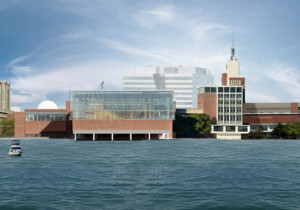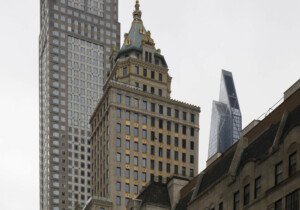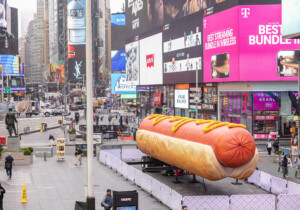There are no straight paths or dead ends at the 81st Street Studio, a new children’s area that opened its doors last week at The Met Fifth Avenue by KOKO Architecture + Design, a New York firm founded by Mishi Hosono and Adam Weintraub. The 3,500-square-foot space is located in a former archive off of the 81st Street entrance on Park Avenue in the Ruth and Harold D. Uris Center for Education. It features books, multisensory exhibits, interactive technology, and play equipment for caregivers and children between the ages of 3 and 11—free of charge.
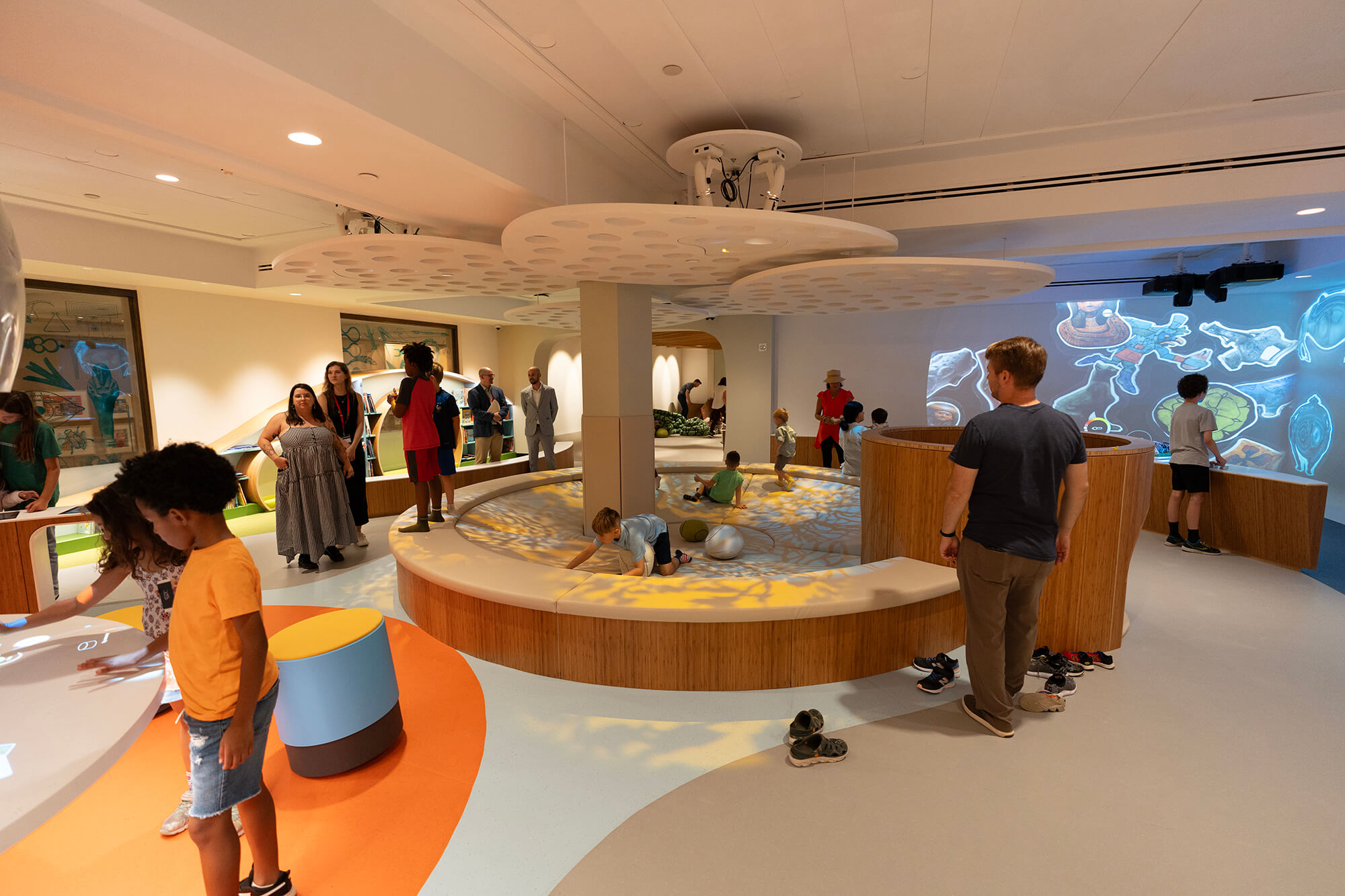
In contrast with The Met’s ubiquitous masonry walls and neoclassical symmetries, the 81st Street Studio has no dominant colors or rigid hierarchies that delineate between spaces for children versus adults, loud versus quiet, public versus private, touchable versus non-touchable. Rather, its furniture, floors, and wall surfaces are a hodgepodge of inviting yellows, oranges, reds, greens, and blues. The spaces at the 81st Street Studio blend into each other following a figure-eight pattern that establishes semi-central nodes in the middle for group activities while providing offshoot nooks for children to crawl into by themselves if they want to, book in hand.
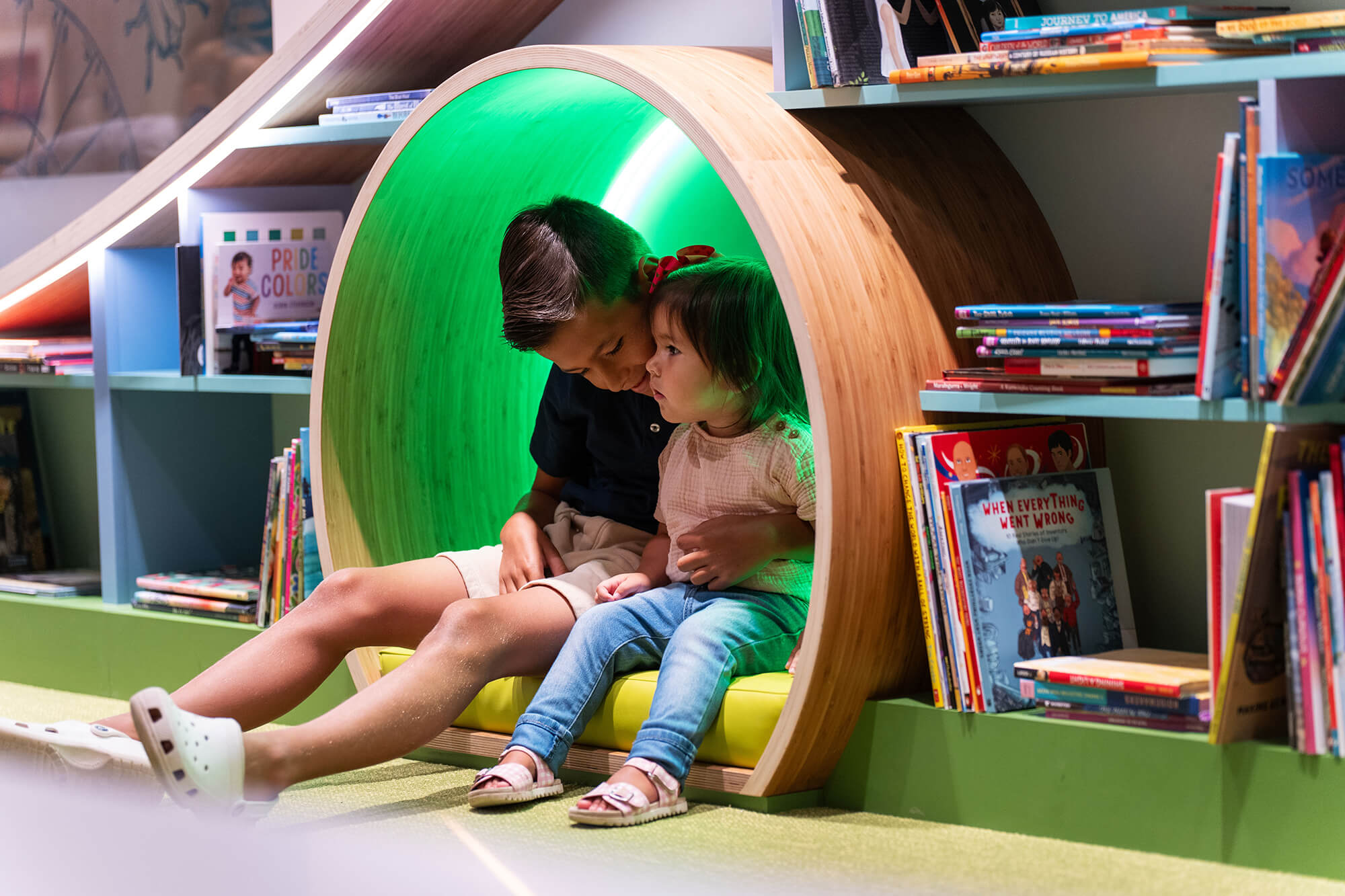
“The original library where 81st Street Studio is located was all rectilinear bookcases built along this heavy grid of columns. In our design we tried to create this fluid landscape,” said Adam Weintraub. “The design was inspired by memories from when I was a kid at the playground. Children can easily be intimidated by all the activity, so we made spaces for group play and storytelling as well as for more of a solitary experience,” he told AN.

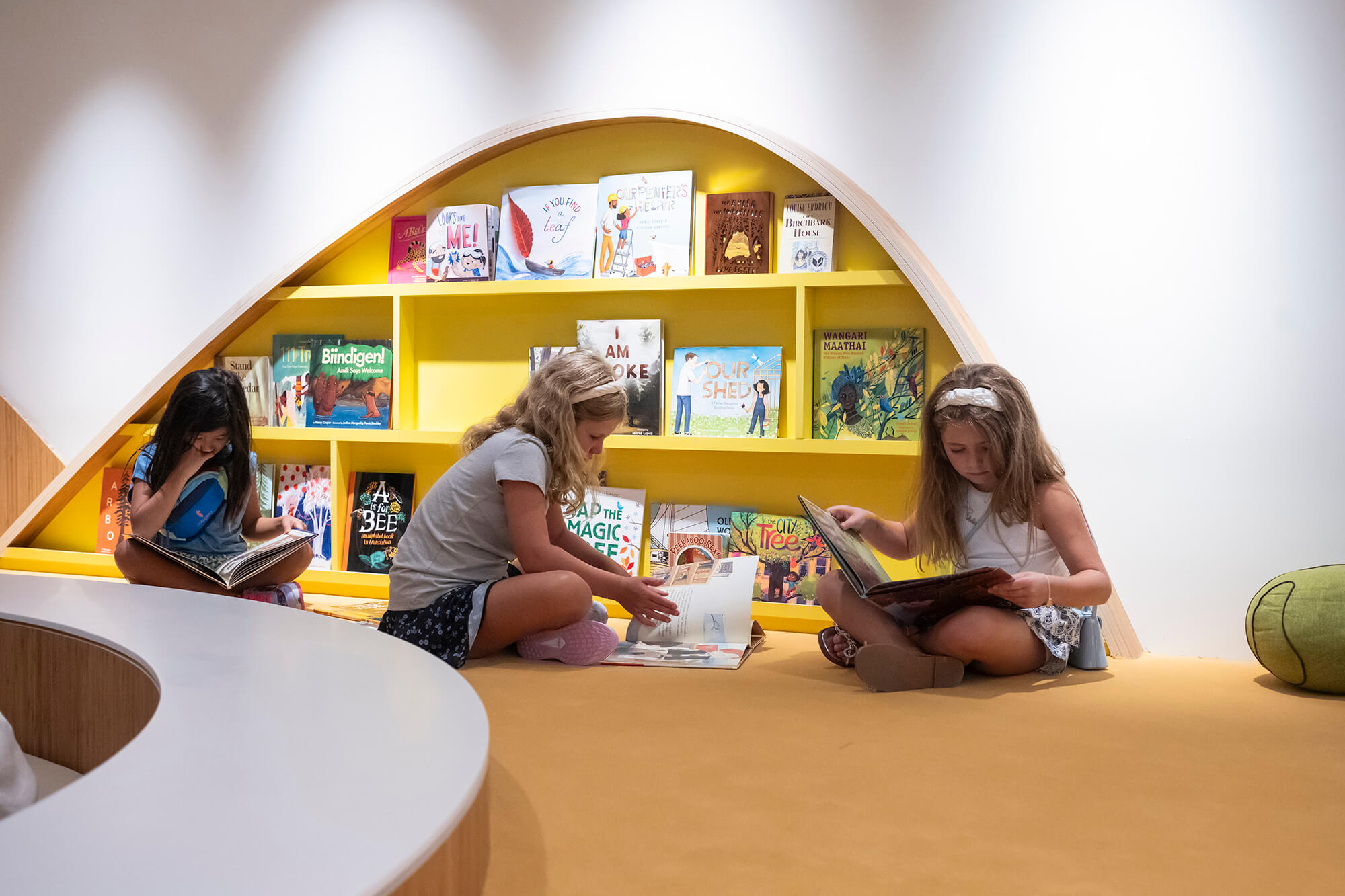
In the space, a central, padded seating area is partially covered by off white perforated boards meant to emulate tree canopies. This element was inspired by Mishi Hosono’s own childhood in Tokyo; a common motif in Japanese design. “Lighting above the board emulates the circadian rhythm of autumn and summer,” Hosono told AN. “It’s meant to feel like sunshine going through leaves that touches the ground. This is to create a peaceful area for the education department,” she said. “It’s meant to be like bringing Central Park into the space.”
The new children’s area features not one but multiple references to Japanese architecture. One exhibition wall towards the entrance features Japanese wallpaper made of wood, as well as cork, oak, cedar, and others for touching and smelling, introducing children to the sustainable material’s possibilities and aging cycles. “One of the first questions we asked ourselves in design was: How do we address all five senses?” Weintraub said. “Architecture is so often image-heavy. But with kids, they’re much more attune to the other senses like touch, smell,” he said.
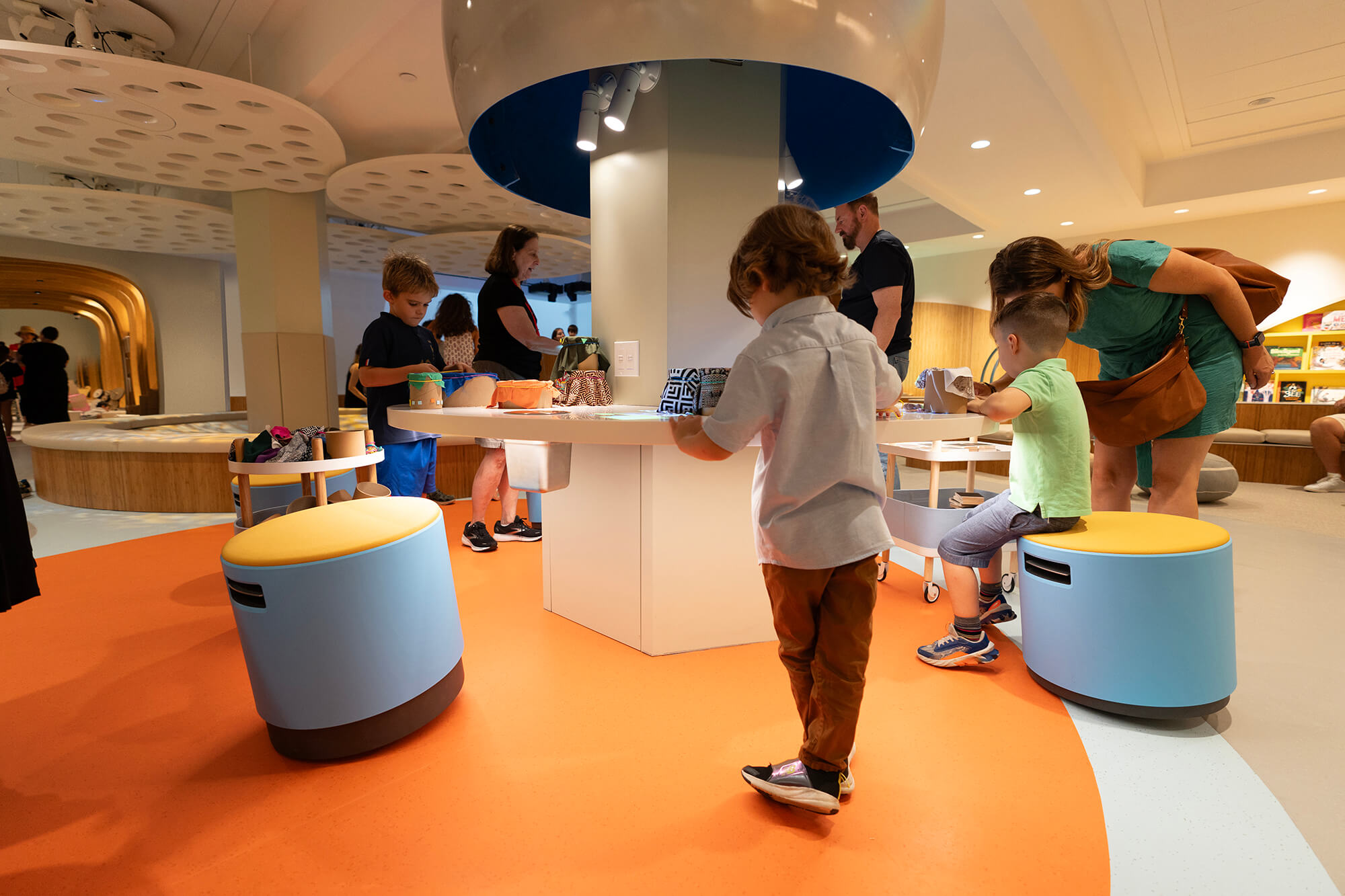
To activate aromatic receptors, even the pillows at 81st Street Studio are designed: yellow cushions have lemon scents, orange pillows smell like oranges. Wood is intentionally sheathed in a lacquer meant to recall wooden ships in Tokyo; transporting children from the five boroughs across the globe, even if just for a few seconds.
For more acoustically-inclined children, across from the sensory wall is a musical station by Kip Washio of Yamaha fitted with bird chimes, a standing guitar, a castanet wall, an organ, and a marimba. The musical station was placed directly across from the material boards to teach children that architecture and space often impacts how acoustics are received and transmitted.

Accessibility was also paramount to KOKO’s design process the architects said. Weintraub and Hosono noted that the ADA ramp at the entrance feeding into the elevated library area was designed to feel seamlessly integrated with the space so as not to alienate disabled users. They wanted the ramp to be a feature that children regardless of their abilities enjoy using. “Rather than treating the handicap ramp as a backend part of the design like a lot of buildings, we made it into a focal point,” Weintraub said. “We wanted to make it fun so that every kindergartener wanted to use it.”
The Met Fifth Avenue’s 81st Street Studio will offer free educational programs for children and caregivers through active learning. Its programming will include art lessons and STEM (science, technology, and engineering, and math) courses. As such, the space itself was a collaboration between KOKO; Heidi Holder, the Met’s Frederick P. and Sandra P. Rose Chair of Education; and The Met’s conservation, scientific research, curatorial, design, digital, and capital projects departments.
“With its focus on interdisciplinary learning through the five senses, the 81st Street Studio is a further catalyst for how The Met engages with all visitors,” Holder said. “It positions the Museum as a place where visitors can make delightful discoveries, take risks, and ask questions, activities that are imperative to reimaging the future role of museums in our communities.” Bluecadet, an experience design firm, was also a partner on the space’s interactive media components. Mark Richey Woodworking and Design fabricated the space’s custom millwork while Round Square Builders were the construction managers.
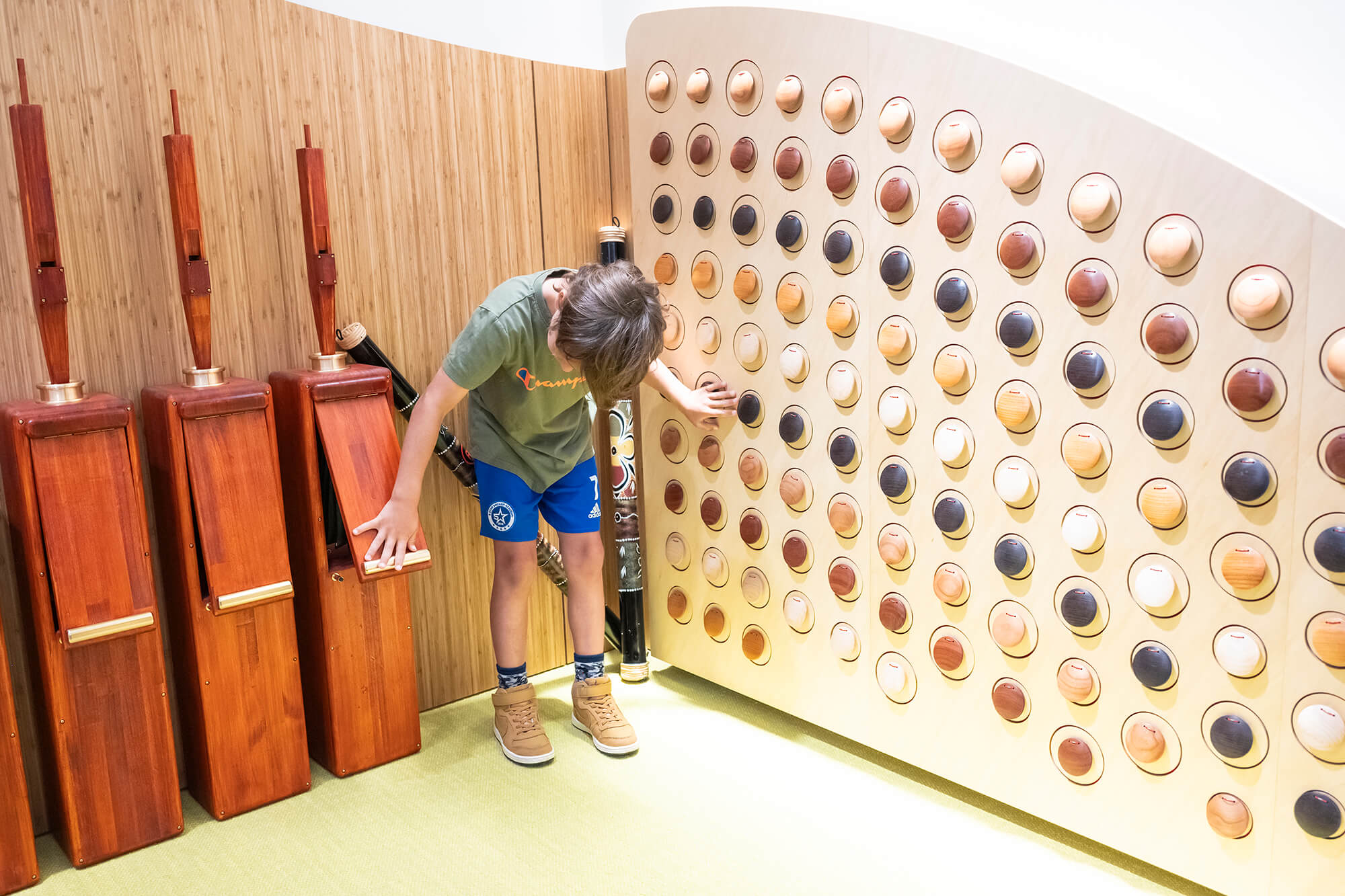
“Where else is stuff like this available?” asked Michael Benedetto, a New York state assemblyman representing the 82nd district, at the grand opening. “This space is something that kids living in Brooklyn, Staten Island, Queens, the Bronx, and Manhattan would have never experienced until now,” he said. “They can come here now for free and discover the world on their own,” Benedetto told AN. “As a former teacher myself, I know that everyone learns differently,” Benedetto continued. “Some kids are visual learners, some are very audible, some are tactile and need to feel and touch things. What the 81st Street Studio does is employ all of the senses together,” he said. “Everybody can learn how they feel most comfortable.”
As of this week, the doors at 81st Street Studio are open to the public. For more info about programming, scheduling, or visiting, follow this link.








